RV Loans 101: Everything You Need to Know
Understanding RV Financing
RVs offer the allure of the open road, the freedom to explore, and the comfort of a home on the go. However, they can be expensive, and financing one without proper knowledge can cost you thousands. “RV Loans 101: Everything You Need to Know” will provide you with a comprehensive understanding of RV financing, ensuring you make informed decisions.
Just as a side note, my name is Jeff Backus and I am the COO and Founder of First Approval Source, the recreational loan experts. I have personally worked on over 10,000 boat and RV deals over my career and I love helping people obtain financing for their dreams.
Alright so hopefully by now you have found your dream rv or you are at least close to deciding on the perfect one. Unless you are Richie Rich and money basically grows on trees for you, it’s time you start thinking about financing.
I know, most people hate the idea of having to work with a bank. It can feel like you have nowhere to turn for honest advice. There are definitely some bad actors out there that have given the lending industry a bad name. And getting a loan on something as specialized as an RV can mean a lot of extra headaches and hours searching online.
Where do you even start? What banks finance rv’s? What types of terms do they even offer?
If those are the questions you are asking then you came to the right place. In this post, we are going to jump in and take a look at everything you need to know about RV financing before you press submit on that credit application.
So let’s hop on the open road and demystify rv loans. There is a ton of misinformation out there on the subject. I know we have people call us all of the time who are just about ready to give up and we are able to find the loan terms they are looking for.
They say it’s easier to learn a new topic by finding commonalities between it and something you already have working knowledge of. So let’s look at a few things you probably already know a little about. We will start with car loans.
First of all, much like automotive loans, most rv loans are considered secured loans backed by collateral, in this case the rv you are purchasing is what is backing the note. All this means is that if you were to stop paying on the loan, the bank would have the right to repossess the rv. This is different from an unsecured loan which is not backed by collateral. Generally secured loans have higher max loan amounts and come with lower interest rates than unsecured loans.
RV Loan Rates and Interest
Most of the loans we do have fixed interest rates with fixed monthly payments. The loans are amortized meaning that a portion of your payment goes towards your principal (which is how much you still owe on the loan) and the rest goes to interest each month. Because you pay down a portion of the remaining balance each month your first payment has the largest amount of interest expense. As you pay the loan off, you pay more towards principal and every following month your interest expense is slightly reduced until you have paid the entire loan off. I know that a lot of people don’t understand how this works but most loans you secure work exactly this way.
Since most of the loans we offer do not have any type of prepayment penalty, you can decide to pay your loan off at any time, make large payments throughout the life of the loan, or even add more to your monthly payment. It really just depends on what your financial goals are and what fits your budget.
Some of our customers also research taking out home equity lines of credit to purchase instead of traditional financing. Remember, doing this will add more debt to your home and tie it up if you ever need to use it for a rainy day or you want to sell the home. The other issue is that home equity lines of credit often take far longer to complete because of all of the lending requirements including surveys, inspections and their underwriting process is more stringent. Depending upon the current rate economic environment, home equity loans can have lower or higher rates. They will almost always have higher fees than securing a rv loan. Make sure to ask what fees are involved including the expenses required for paying the closing attorney, surveyors and inspections.
We currently have fees for processing and lien procurement but they are much less than anything you would probably see on a home equity loan. Most rv dealers that offer in house financing have fees as well. Depending upon where you are located and whether or not your dealer, broker or lender is registering, titling or filing a UCC on the rv, motorhome or travel trailer. Your fees can differ greatly from one customer and state to another. You can check your closing statement or bill of sale when working with a dealer or lender to see all of your fees and taxes disclosed. They are required to spell this information out to you in an easy to understand way. So if they don’t, move on and find another partner to work with.
So I got a little off topic there and dove pretty deep into the type of loans you can choose from when purchasing an rv. Let’s jump back into how rv and car loans are similar.
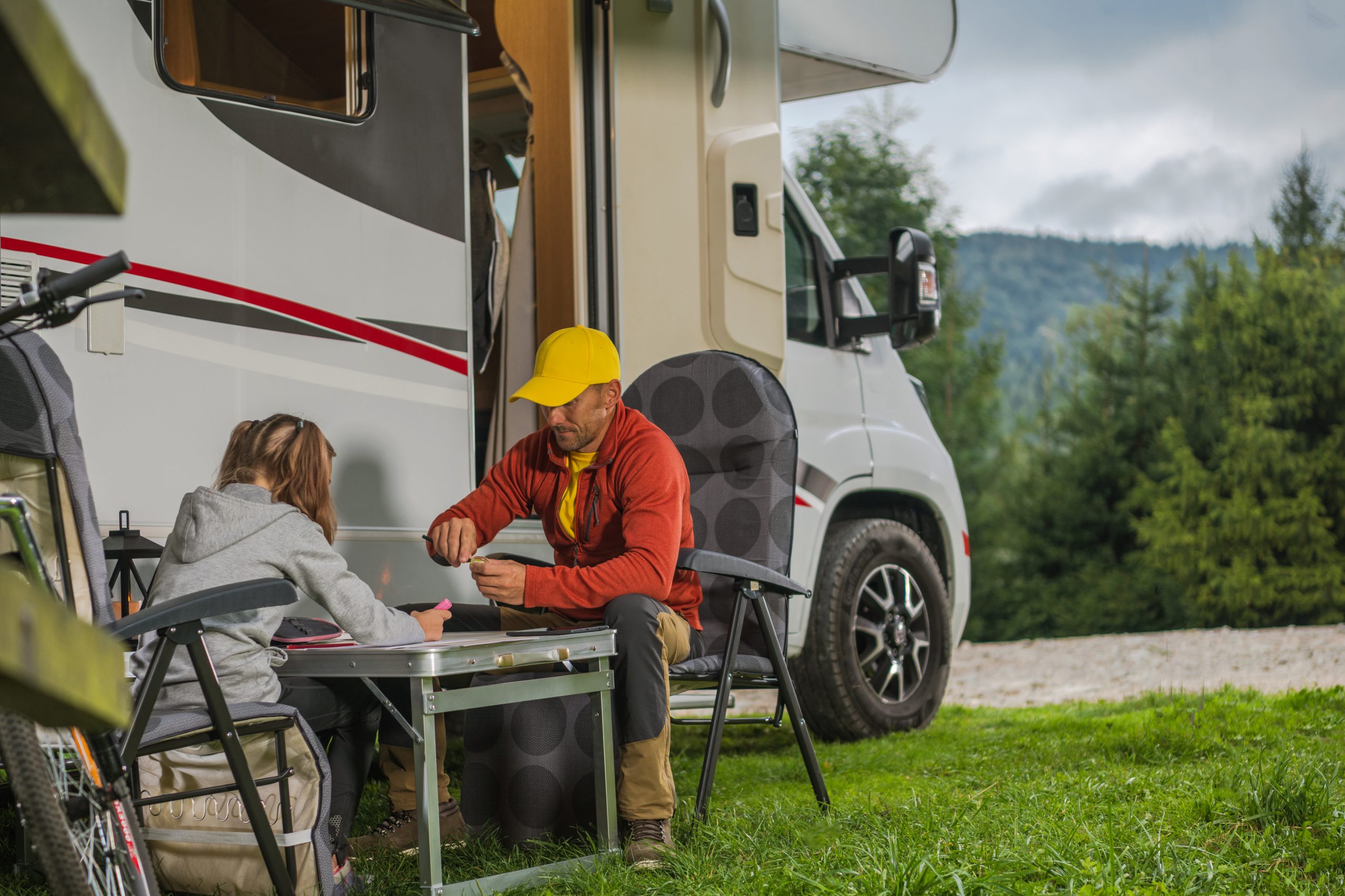

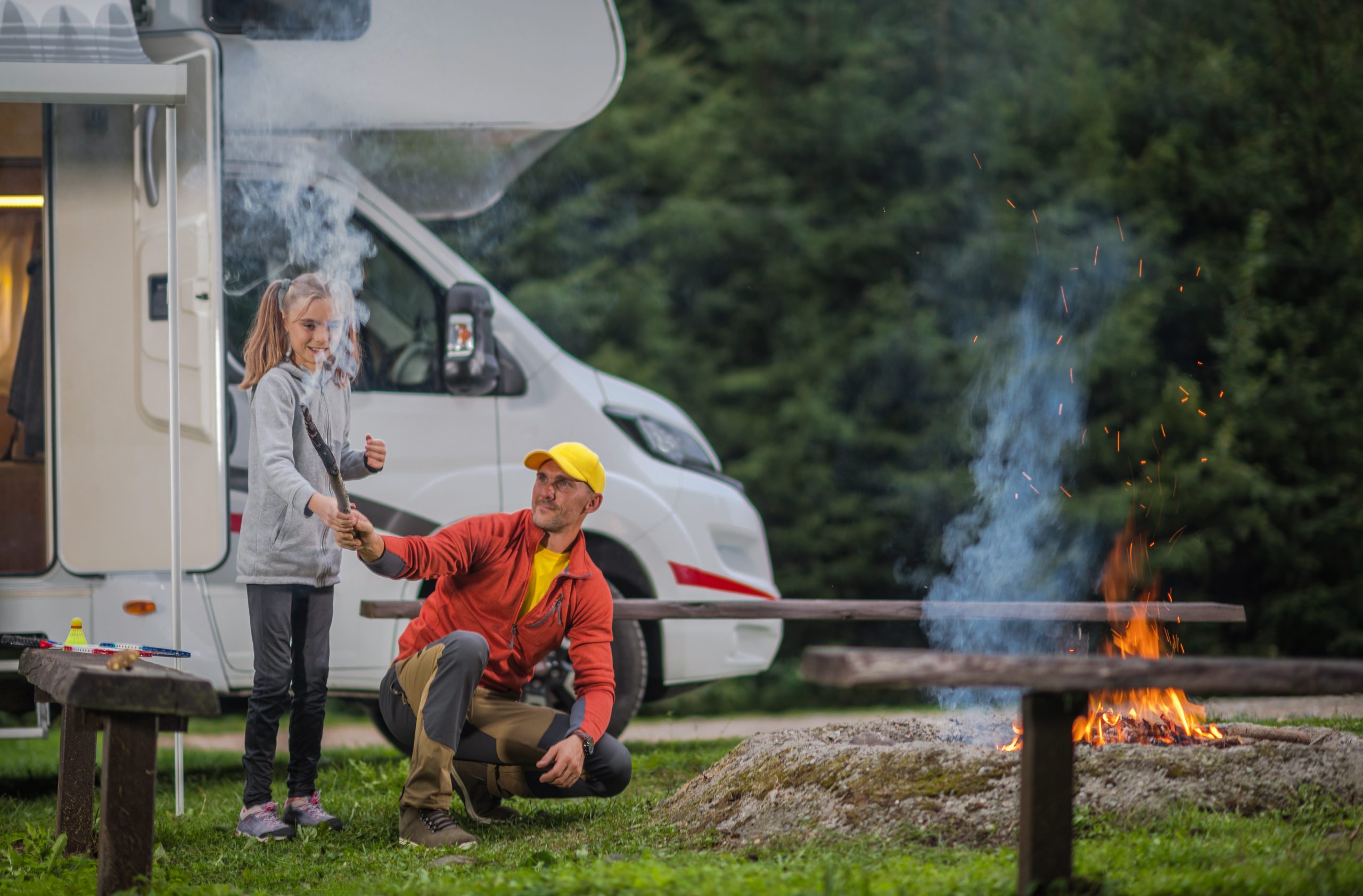
Types of RV Lending
One thing you will notice is that in both industries the lenders have different programs according to the age and type of the rv you are looking at as well as what your credit profile is. I will jump more into the credit requirements later in this post. But with everything else the same, the older you go the higher the interest rate and the more difficult it can be to get financing. The key here is finding the right lender for your collateral and credit profile. Having the right lender makes all the difference. I have seen lender’s request all types of extra stipulations just because they did not understand the luxury financing.
Basically, all I am saying is make sure you are dealing with lenders or brokers that know what they are doing and have experience with rv and trailer lending. We work with about 17 different lenders across the United States. Some markets we have access to less lenders due to each lender’s footprint though and whether or not you are working with one of our dealer partners. Feel free to reach out to us with any questions you have. Regardless of the area you are in, I am happy to give you advice on your search.
RV Lending Down Payments
But anyway back to the similarities of rv and auto loans. Let’s jump on down payment. The more you put down, generally the better the rate with all other factors considered. There is an old saying, “Down payments are like gym memberships– the more you put down, the more the purchase will fit your finances!”The lenders like to see that you have a commitment to pay back the loan. The more down payment you have tied up in a loan the less likely you are to walk away from and default on it. In addition to having more invested, putting more down means that the lender has less risk if they ever had to repossess the rv. The lender would be able to resell the rv to someone else and make a majority of their initial investment back.
The less money you put down on the rv, the lower the equity the lender has to be protected by. This is why the larger down payments and trade allowances will help reduce your interest rate. I advise playing around with how much you want to put down to find your preferred monthly payment. Obviously at some point, you hit a maximum amount down where the rate no longer adjusts. Generally once you have submitted your credit application to a lender they can begin to see where you fit within their lending program.
RV Loan Pre-Approval
I do know though, if you are like most of our customers, you probably want to know more information before submitting a credit application. The good news is that some lenders do offer pre-approval programs. For preapproval, I went back and forth on whether I should put this in the category as the same or different as car loans. We do have options for pre-approvals where you can get a general idea of what you are approved for. Unlike the auto industry though, each rv you look at, especially if you are considering purchasing used; can be very different from one another.
This can cause minor issues with approvals. Furthermore, since we are doing soft credit pulls, things can differ slightly once the lender actually runs your credit. But I don’t want to discourage you. If you want to submit an application to us I can give you an idea of where your terms might fall within each of the lender’s programs.
Moving past preapprovals, let’s jump back into the similarities between car and rv loans. Something that surprises borrowers sometimes is that the lender will require you to secure property and casualty insurance on the vehicle for the life of the loan. I obviously recommend getting insurance whether you finance or not though. This is your baby after all!
RV Insurance
Most lenders require that you get insurance with a deductible less than $2,000 or a max of 2% of the rv value. This is just something to keep in mind because it can sometimes raise your monthly insurance premiums slightly. Rv insurance premiums vary greatly depending upon the age, price and location of the vehicle. The closer you are to troubled neighborhoods and the higher likelihood of weather risk the higher the premiums.
So far I have spent most of the time on this post telling you how rv lending is similar to the automotive world. Let’s look now at all of the differences and some considerations that applicants don’t normally expect to see.
What are RV and trailer loan Terms?
The first thing you will notice is that 90% of people are taking much longer term loans than with car loans. Loans over 10k on units that are 15 years or newer can generally get a max term of 10 to 12 years, Move your financed amount up to $25,000 or more and you can generally finance for 15 years. Go over that $50,000 mark and you can even do 20 years. This is significantly different from most car loans which generally have maximum limits of 5 to 6 years. Most of the funded loans I see for rv or trailer lending are written at the max loan term. Extending out your term can really make your monthly payment more affordable.
Are RV loans hard to get?
Now, I mentioned earlier that I would go over lending requirements for rv loans. Obviously, lenders base your credit worthiness on how likely you are to repay the loan. This means they are going to be looking at a number of different factors including your credit score, how much income you make, what other loans you have had in the past, the amount down you wish to apply, and how long you have been at your job and residence.
Generally your debt to income ratio needs to be 40-50% with the loan on your credit file. To figure out your DTI just take the amount of money that you have outgoing every month divided by the amount of money you have incoming. Then multiply by 100 and this will give you your debt to income ratio.
The longer you have been at your employer and residence the more stability you show. If you are self-employed for less than a year it is very difficult to get a loan because you cannot show proof of income. There are some lenders that will look at cash flows of the business. It is more work but having steller credit can offset some of this risk for the lenders so it is not something I automatically say no to. Larger motorhome customers have more options when it comes to proving income as well.
You will notice the overall credit requirements for rv and trailer loans are more stringent than automotive lending. Remember, lenders look at this purchase as a nice to have fun luxury investment. They do not consider it a necessity. Overall, across the lender’s portfolio, rv loans can be riskier to lend on than homes or cars. Because of this, you might be able to walk in and out of a car dealership with a brand new car and not be able to do the same for an equally priced rv. Again the key here is to make sure you work with someone that understands the industry and has different lenders to work with.
I have customers ask me all of the time why rv’s are considered more risky for the lender. There are a few reasons. The largest reason is that if you are thinking about the typical borrower, they are much more likely to miss a payment or default on a loan that is not necessary or as important to their everyday life. Imagine you hit hard times and you have the ability to only pay one or a couple of your outgoing bills. Are you more likely to pay for your home, your car or your rv? With the exception of a few die hard travel nuts I know who would rather sleep in their trailer than their house, I am confident to assume that most people would keep their home and car over their rv.
The other reason that rv’s can be more risky for the lender has to do with getting their investment back out of a deal that has blown up. While most rv loans are paid on time, there are situations where the lender has to repossess the rv when a customer fails to make their payments. Finding the RV or trailer, figuring out how to transport it, then finding a buyer is a more difficult process than just going and grabbing a car or a truck that was repossessed. Because this repossession process is more difficult, the risk of losing money on a loan is greater for the bank.
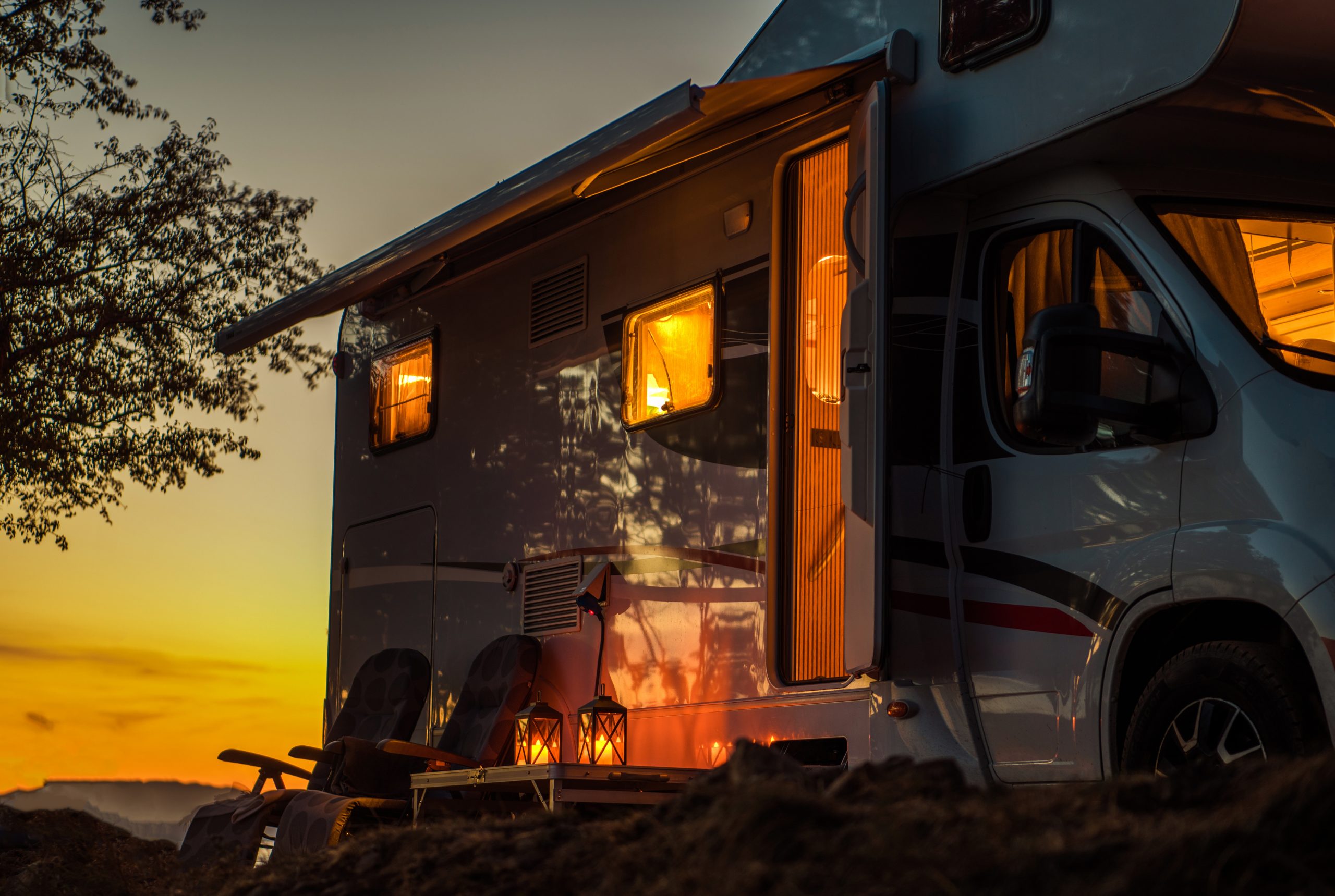
How much RV loan can I afford?
But I know you don’t ever have to worry about something like that because you are going to make on time payments every month! So let’s get back to the important stuff. Each lender will have different programs and different rules and stipulations. Most lenders give loans over $150,000-$200,000 more stipulations. In these instances, the loan process is treated more like a mortgage in that they look at your liquidity as well as all of the other factors I already mentioned. Liquidity just means how much cash or cash equivalents you have at your disposal. Depending upon the lender, this can include 401K’s, IRA’s, Certified deposits, life insurance policies, and even sometimes crypto. The lender might require a personal financial statement with copies of your current account statements as proof of liquidity.
In addition to large loans requiring extra stipulations, speciality or subprime lending in the rv or trailer industry is much different than in the car industry. You generally do not see buy-here-pay-here financing. Furthermore, there are not a lot of manufacturer sponsored finance programs for new rv’s like you see in the automotive industry. Leases are a lot less common as well. Generally, loans are placed with speciality lenders when a customer’s credit is under 700. There are situations where you might receive an approval at a prime lender but the lower the score the less likely that is. If you have a few credit hiccups be ready to provide proof of employment, income and residence as most specialty lenders require these stipulations. Remember, when you start using speciality lenders they will almost always have more requirements and stipulations.
How to get the best RV loan interest rate?
But now let’s talk about what everyone has questions about. Interest rates. The first thing you will most likely notice is that rv loans generally come with higher interest rates than car or home loans. How much they might differ can vary widely all over the country and depends greatly on the current economic environment. I have customers ask me all of the time how much this difference is but it is really hard to say. The best thing to do is make sure that you are fully prepared and have done everything you can to set yourself up for getting the best rates.
The first thing you are going to want to do is use some sort of credit tracking tool to see what your credit score is and if you have any blemishes currently reporting that you need to be aware of. I recommend downloading credit karma on your phone because it shows you two different credit bureaus, it is free, easy and gives you recommendations about how you can improve your score.
The reason I recommend doing this is so that you can have a good idea of the potential hurdles that might pop up in your rv buying experience. If you know the problems you have going into the purchase then you know what type of lender you need to work with. The other reason I always recommend using something like credit Karma is so that you can have an informed discussion with your finance representative. There are a few bad actors that will try to take advantage of people that do not understand the finance game. Knowing what your credit report actually says will help you to spot when you might be dealing with a dishonest person.
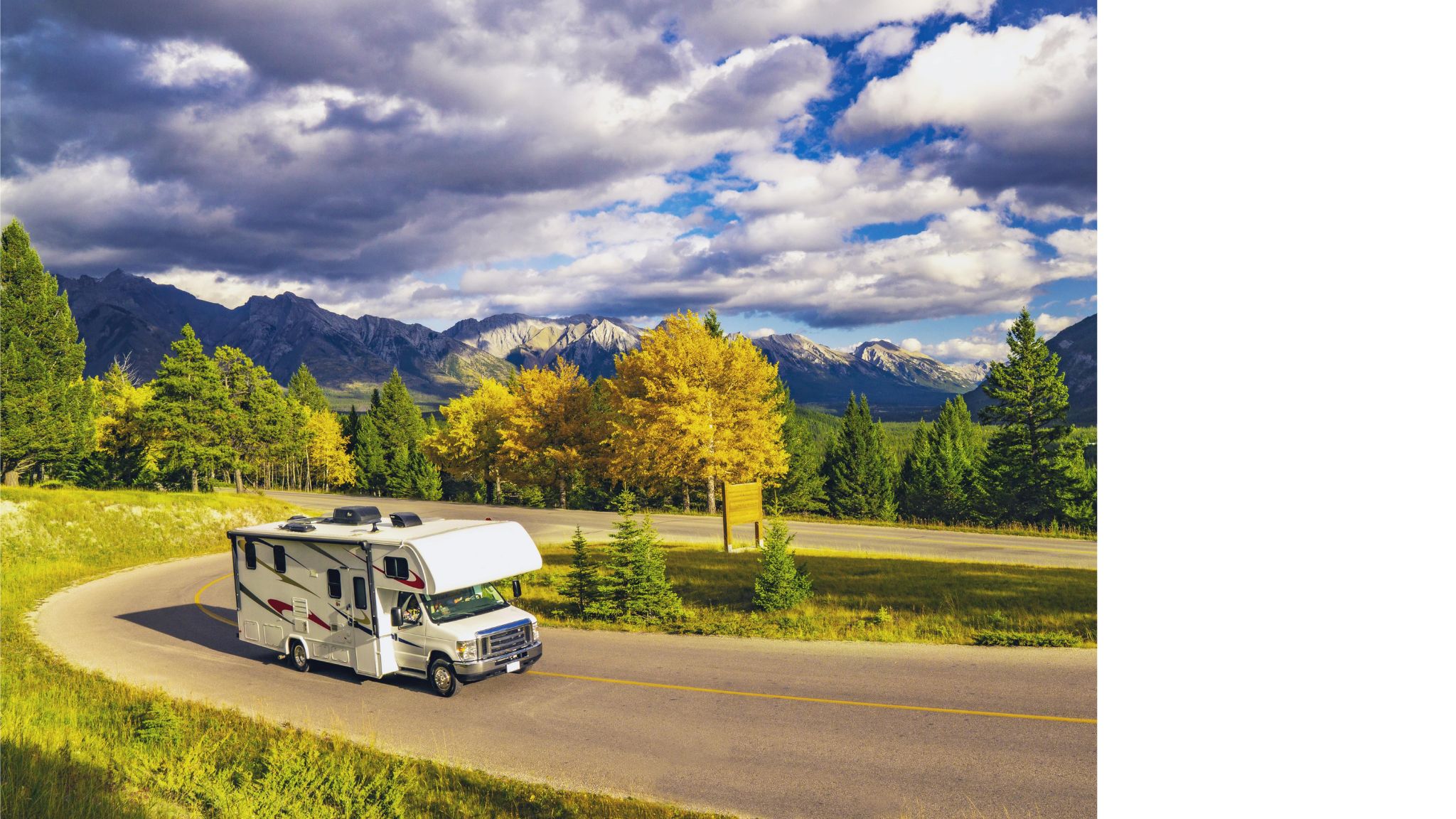
RV Loans: Before you buy tips and tricks…
If you’re reading this in the early stages of the rv buying process and have more time between now and when you will actually be making the purchase I have a few tips that might make a difference when you go to apply. I am not a financial advisor and I am not giving financial advice nor am I offering tips for credit repair. I will give you a few things to look out for before applying. I also have another video and post that dives into this information in even more detail. Most of this information can be found on credit karma, my Fico, or experian’s websites.
Check your credit report for the following items. Obviously first and foremost your score. Scores under a 680 are going to most likely go to speciality lenders. Check whether or not you have any collections, settled accounts or derogatory marks. If you have any open collections that are unpaid, this can be a real obstacle to getting a loan. You might want to consider paying the open collections off if they are small. I can’t tell you how many times I have seen open collections that are less than $100 bucks from something like direcTV or an old unpaid phone bill. I get it, a lot of customers say they won’t pay these collections off out of principle because they received bad service at the company that sent them to collections. Just remember, as long as the collections are open and on your report, they are going to be there for a lender to base their risk profile off of. If a lender sees these blemishes, they may raise your interest rate to offset the added risk.
In addition to your score and your derogatory marks, take a peek at your highest installment credit. That means what is the largest loan you can show on your credit report. These can be open or closed loans. Look for the original loan balance on your credit file. Whichever one was the highest will be your largest high credit. High credit is a large determiner or the max loan amount that you might be able to get for your new rv. Don’t expect to get a $200,000 loan if the highest loan you have on your file is only $25,000. Lenders like to see that you have had experience handling a loan of similar size and length when determining whether or not to give you a new loan.
Installment credit is generally a home, automotive, or equipment loan. It is generally not a credit card or student loan. For those of you watching, screaming at the computer or phone saying student loans are installment loans. I get it that can be true. They generally have less weight when assessing credit risk though in my experience. Student loans tend to complicate the waters more than they serve to help ease lender’s fears. In addition, they generally have unique payback periods that I would argue are not like your traditional installment financing.
As a side note, accounts in deferment or accounts with currently deferred payments can cause issues with recreational loans. During COVID we saw this a ton. Our clients were contacted by their bank and asked if they wanted to pause their payments or defer them for a period of time. This sounds like a great option right. No mortgage payments! But it made it very difficult for them to get new loans. Think about it this way, if a lender sees you are currently deferring payments on an account, especially on one of your most important and expensive ones, it looks like you are already having financial hardships. So why would the lender want to give you a new loan, add even more debt and for a vehicle that is a luxury fun item not a necessity. The answer is they wouldn’t. So keep that in mind if you currently have any deferred accounts.
In addition to looking at your high credit amount check to see how long you have been reporting in the bureau. The longer the history and the more on time payments the less risky your credit file is with all other factors considered. Count the number of tradelines you have had as well. Tradelines are just the term used to refer to accounts listed on your credit reports. More tradelines give lenders and the FICO algorithm more data points and history to assess your report.
Some of my customers are surprised when they can’t find an account on their report. If you know you have taken out a loan in the past 7 years that you do not see reporting on your credit file, your lending institution might not report it to the credit agencies. You can reach out to the bank that currently services your loan and ask them to report it to the credit reporting agencies. Sometimes this works and sometimes they will tell you to go pound sand. It really just depends on the lender. I see this more often when the loan is through a small credit union or local community bank.
Next up is to check your credit card balances. With all other factors considered, the more credit card debt a lender sees, the more risky your file is. Furthermore, check your credit card utilization on each individual card and overall across all cards. To check on a per card level take your outstanding debt on the credit card and then divide it by the total max limit of that card and then multiply by 100. This will give you your credit utilization ratio for each card on your file. If this number is above 30% you might want to consider paying that card down a little. Lenders look at cards with over a 30% utilization as more risky.
As far as your total credit card utilization goes, you can calculate this by adding all of the credit card debt you currently have across all of your credit cards and then add all of your credit card max limits. Take the total debt divided by your total max limit and multiply by 100. This will give you your total credit card utilization. Keeping this number under 30% is recommended on credit karma to boost your credit score. Credit karma also states that people with the highest scores tend to have credit utilization under 10%.
If you ever hear someone say I can’t believe my credit score went down because I paid my credit card off and closed the account. How did my score go down? It might be because they closed a credit card with low utilization and it affected their overall utilization. Imagine you have 3 credit cards. One with a max of 20k and a balance of 2k, one with a max of 7k and a balance of 2k, and one with a max of 4k and a balance of 1k. If you add all of these together you get a credit card utilization of about 16% which isn’t so bad. But then imagine you pay off and close the 20k loan and don’t do anything else. Recalculating your total credit card utilization now shoots up to almost 30%! Now you can see how closing the account can actually end up lowering your score.

RV Loans and Credit Karma
So I have said that services like credit karma are great ways of getting an idea of what your credit file looks like. There is just a little side note though, know that they can only go so far. On Credit Karma you’ll see scores and reports from TransUnion and Equifax, both using the VantageScore 3.0 scoring model. Lenders will generally use your FICO score which is another scoring model. This can sometimes cause issues if the two scoring models show different numbers. I actually have another video and post where I do a deep dive of this information. I don’t want to go into it too far on this one though. Just know that while credit karma is a great tool for finding out the information we spoke about earlier. The scores can be different than what the lender ultimately pulls.
Applying for an RV Loan
Ok so at this point we have pretty much covered how to prepare yourself from a credit perspective to have the best chances of getting the terms you want. Let’s quickly just talk about the typical process from start to finish. At most companies you are going to need to fill out some sort of online credit application or pre-approval form. The broker or dealer will call you and go over your application with you most likely on the phone.
They should verify that all of your information was submitted correctly and that you are who you say you are. There are a lot of compliance laws out there that we all have to follow that protects the consumer. So be happy when they go to verify your info. It means that your information is being protected. At this point, they will probably ask you what are called out of wallet questions. What that means is that they ask you questions that only you would know and that you couldn’t find out about someone just by stealing what is in their wallet.
After your credit and identity have been verified you will need to provide the information about the rv you are looking to purchase. Obviously, if you are working directly with a dealer they will have this information. Make sure to give all of the accurate information at this stage. If you end up getting an approval based upon an assumption that does not turn out to be true. It could kill the whole deal in the end. For example if you thought the rv had a slideout but it turns out it doesn’t. It can really affect the loan to value of the vehicle and either decrease the approved finance amount or increase your rate dramatically.
Also, do your best to find out what options are on the rv. The more options the rv has the more valuable it is. Lenders don’t give you credit for all of the options but do your best to compile a list for your loan specialist. Every dollar counts here. There have been times that a couple options have improved an interest rate or even decreased the amount down a customer was required to add to a deal. Don’t ever lie about this though. Lenders have ways of tracking and checking this information if needed.
Once a loan specialist has verified your info and the collateral information, it is time for them to submit to the lenders. Be sure to ask how many lenders the finance manager intends to submit your deal to and that they don’t just shotgun your credit out to 10 different places right out of the gate.
Some brokers will take your credit file and send it to every lender they work with. This ends up frustrating the lenders because in many instances this is wasting their time. While you have a rate shopping period of 30-45 days that the FICO algorithm takes into account. It is still always best to limit the credit pulls you have on your file if possible. We generally only send your application to one or two lenders at a time.
There are instances when we may need to send to multiple lenders. We do our best to keep you updated throughout the process though so you know what is going on the entire time. If you are worried about your credit getting hit from a pull I actually have another post and video you can refer to where I jump into the FICO algorithm and how it factors credit-pulls into calculating your score. If you are interested, feel free to check it out.
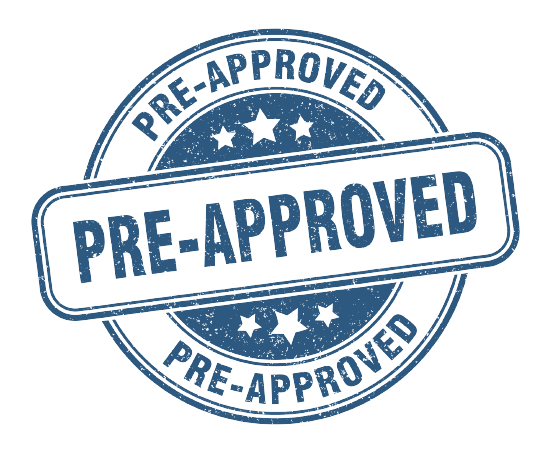
RV Loan Approvals
After the loan specialist or broker submits your file to the lenders they should receive a callback within a few hours depending upon the time of year. They will email you and/or give you a call to go over all of your options. At this point they will also let you know what stipulations, if any, the lender has requested you fill. Stipulations can be things like proof of income, proof of residence, survey’s, inspections and anything else a lender needs in order to feel comfortable providing your loan. There are lenders that require all of those stipulations no matter what and then there are other lenders that do not require any of this information. Again, this is where it is important that you work with a broker or dealer that has multiple lending sources that actually understand the rv or trailer industry.
Once you have cleared any stipulations your loan specialist will offer you different protection products. Generally, these will be items like service contracts, also sometimes incorrectly referred to as extended warranties, environmental protection, guaranteed asset protection or GAP, roadside assistance and insurance. I always recommend getting these products when it comes to rv’s. It isn’t like it used to be where RV’s and trailers were easy to repair. Most RV’s have more technology in them than the space shuttle did in the 80s. If stuff breaks it is expensive. I have a bunch of videos that go over the different protection plans you can watch if you are interested. But just know, I always recommend protection and peace of mind.
RV Extended Warranties and Service Contracts
After you pick out which protection products you are considering, it is time to go to contract. Depending upon whether or not you are purchasing from a dealer or private seller, whether or not the collateral is new or used and what type of trailer you are getting this process can differ greatly from one lender to another. We have docusign capabilities at most of our lenders. Keep in mind that most states require wet signatures for title work and power of attorneys so there are often times still back and forth here. If you are working through one of our certified dealer partners then they will handle all of the heavy lifting for you.
If you are purchasing from a private seller we will need a few documents signed by them and the rest will just need to be signed by the borrowers. Aka you and your co-pilot! Processing times from the date of signing vary greatly again depending upon the lender and the time of year. It is best to just ask your loan specialist for an estimate on the processing time.
Once your deal has been funded we will verify any wiring information needed and wire your funds to the seller or if there is a payoff, to the seller’s bank. Just as a heads up, if you are working with one of our dealer partners you really don’t have to worry about this money transfer part. Generally, they will allow you to take your new rv or trailer home at the time of the sale and you don’t have to wait for us to fund the deal. We handle that directly with the dealer and the lender.
We will send you a brief survey to make sure we did a good job. But that is pretty much it. Something that I always try to remind my team is that before COVID about 60-70% of RV buyers were repeat customers. It is impossible for us to stay in business and to continue the success of the industry if our customers don’t have an easy, fun and simple purchasing experience. If you work with us or even one of our competitors and you don’t have a good experience please make sure to let me know. I want to do everything I can to make sure you have a great experience. I want to see you out on the open road and having some fun!
But that is pretty much everything you need to know! I appreciate your time today and thanks for reading this post. Don’t forget you can download the RV Buying Guide by filling out the form above. Feel free to give me a call or shoot me an email with any questions you have. I am always here to help! Check out my other posts and YouTube videos on the RV purchasing experience and don’t forget to follow us on Instagram! I look forward to hearing from you soon!

